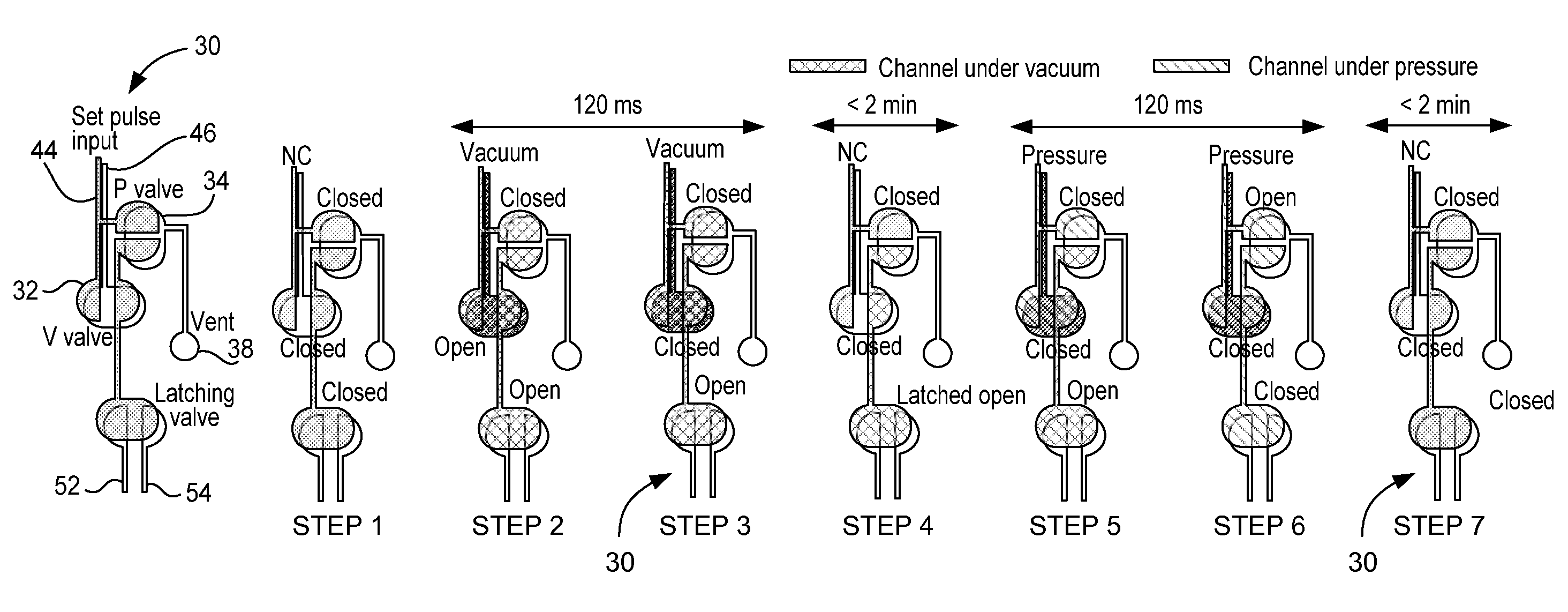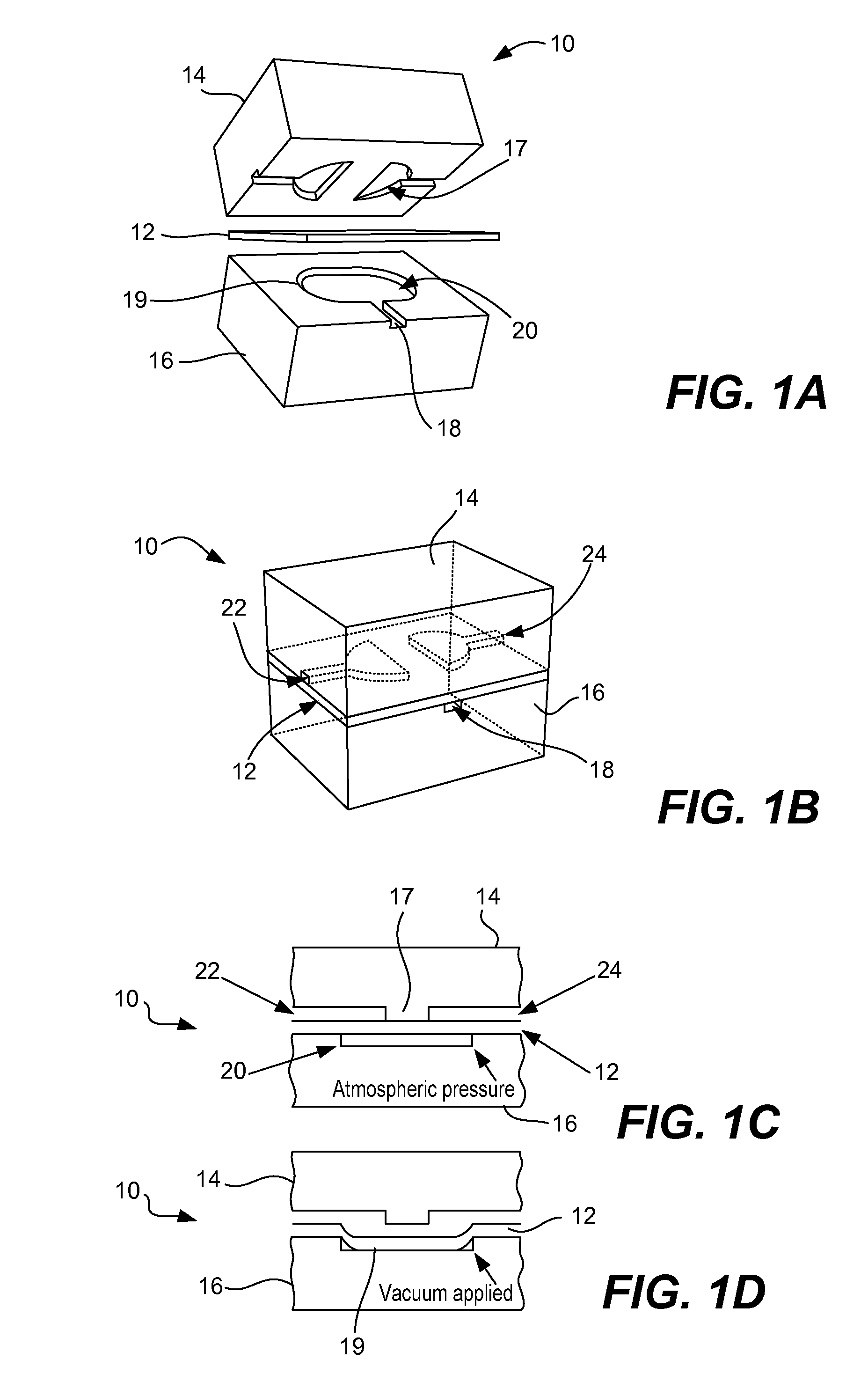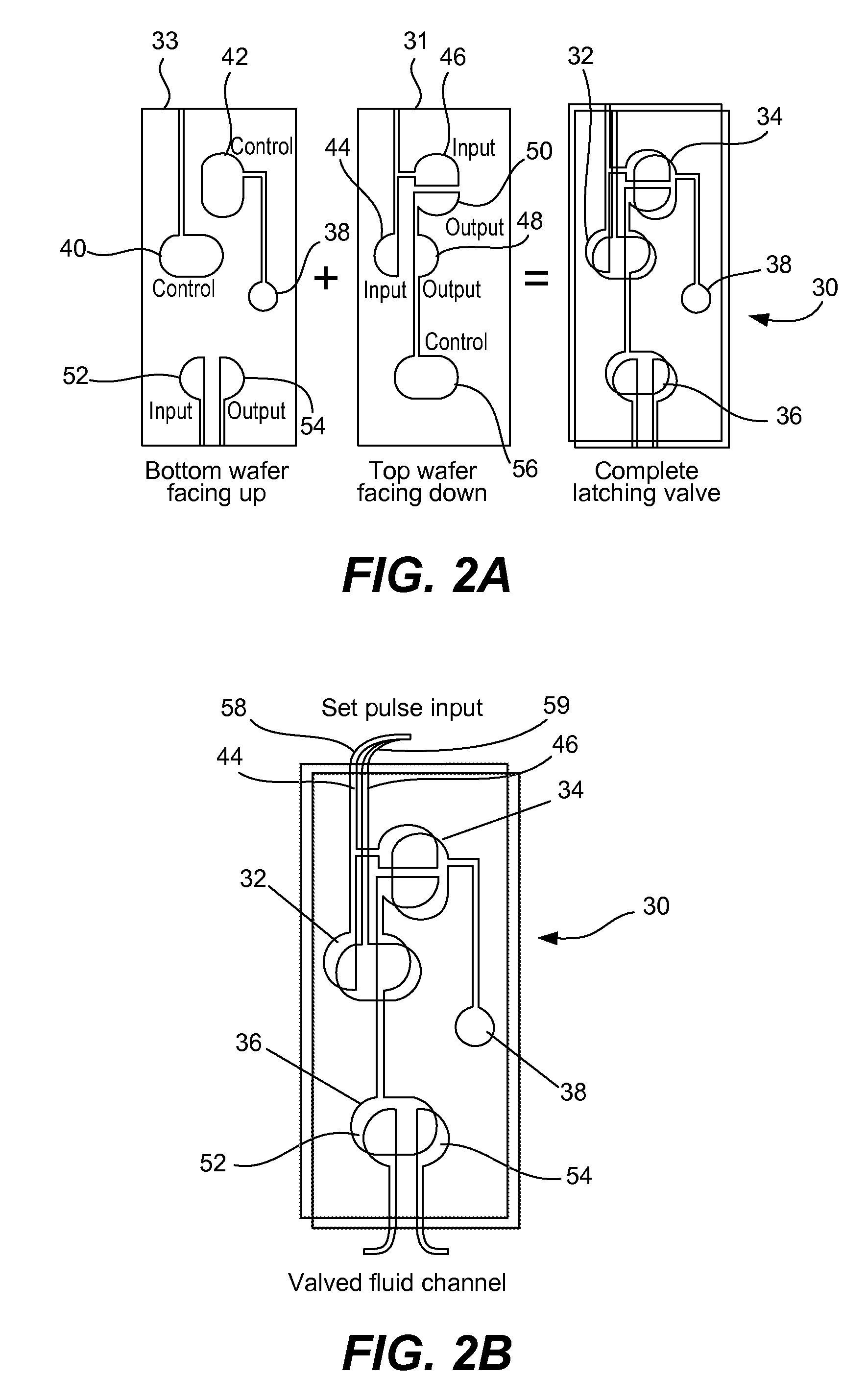Multiplexed latching valves for microfluidic devices and processors
a technology of microfluidic devices and processors, applied in the field of microfluidic structures, can solve the problems of slowed realization of this goal, significant decreases in overall sequencing time and cost, and valving and pumping technologies, and achieve the effect of reducing the size, power consumption, and cost of microfluidic lab-on-a-chip devices
- Summary
- Abstract
- Description
- Claims
- Application Information
AI Technical Summary
Benefits of technology
Problems solved by technology
Method used
Image
Examples
Embodiment Construction
[0041]Reference will now be made in detail to some specific embodiments of the invention including the best modes contemplated by the inventors for carrying out the invention. Examples of these specific embodiments are illustrated in the accompanying drawings. While the invention is described in conjunction with these specific embodiments, it will be understood that it is not intended to limit the invention to the described embodiments. On the contrary, it is intended to cover alternatives, modifications, and equivalents as may be included within the spirit and scope of the invention as defined by the appended claims. For example, the techniques of the present invention will be described in the context of glass microfluidic devices, although other devices such as plastic or polymer devices could also be used.
[0042]It should be noted that the fluid control structures suitable for use in microfluidic devices can be applied to a variety of microfluidic devices. A pathogen detection sys...
PUM
 Login to View More
Login to View More Abstract
Description
Claims
Application Information
 Login to View More
Login to View More - R&D
- Intellectual Property
- Life Sciences
- Materials
- Tech Scout
- Unparalleled Data Quality
- Higher Quality Content
- 60% Fewer Hallucinations
Browse by: Latest US Patents, China's latest patents, Technical Efficacy Thesaurus, Application Domain, Technology Topic, Popular Technical Reports.
© 2025 PatSnap. All rights reserved.Legal|Privacy policy|Modern Slavery Act Transparency Statement|Sitemap|About US| Contact US: help@patsnap.com



